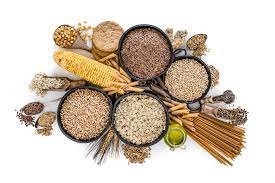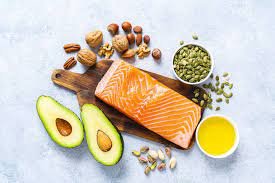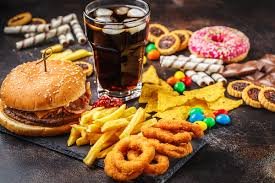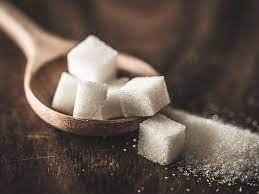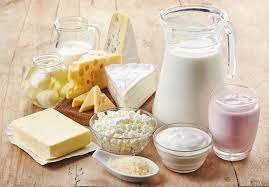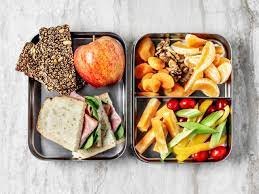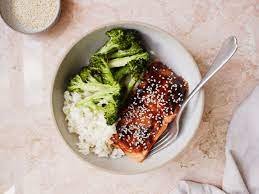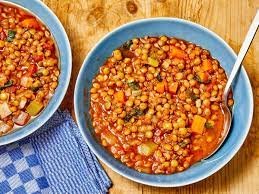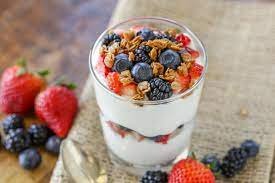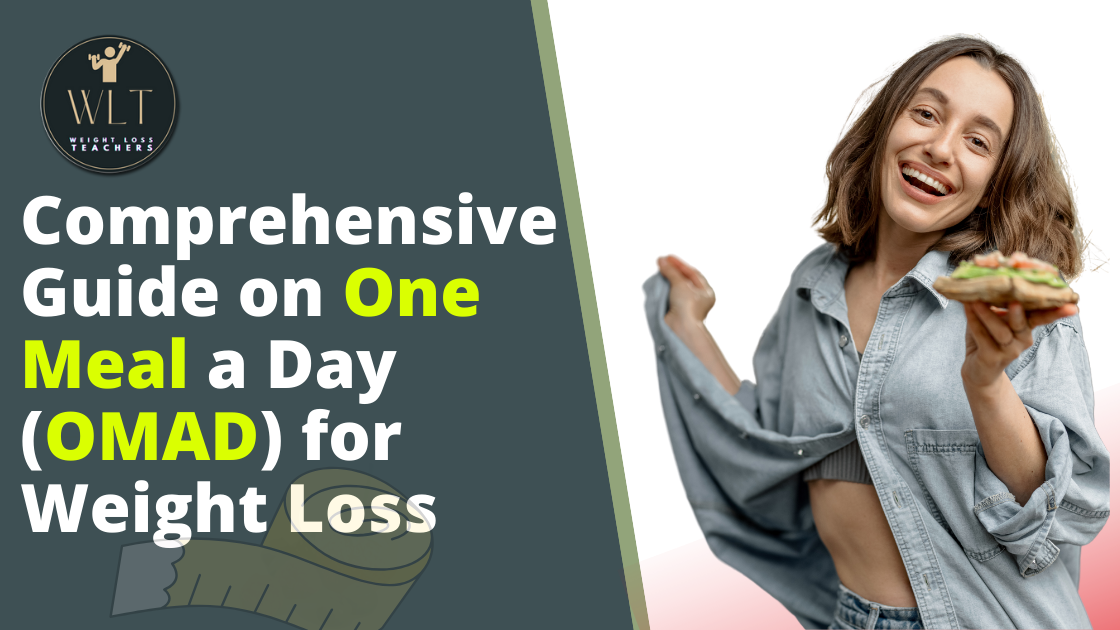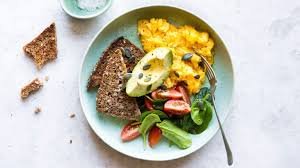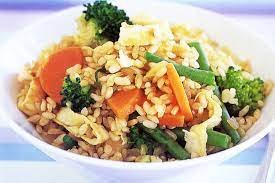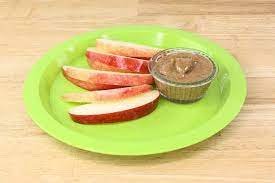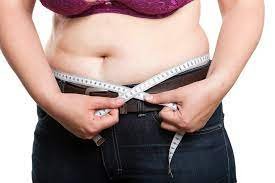Natural and Effective Ayurvedic Supplements for Weight Loss
Share on facebook Share on linkedin Share on whatsapp Share on tumblr Share on pinterest Share on telegram Weight management has developed into a huge concern for many people in today's fast-paced world, where bad lifestyle choices and sedentary lifestyles have become the standard. Ayurveda, an

Weight management has developed into a huge concern for many people in today’s fast-paced world, where bad lifestyle choices and sedentary lifestyles have become the standard. Ayurveda, an ancient Indian system of medicine, has gained a reputation for its holistic approach to health and well-being as the desire for effective weight loss solutions has increased.
Table of Contents
Introduction
Ayurvedic weight loss supplements, made from natural herbs and components, provide a safe and long-term solution to lose extra weight while increasing overall vigor. In this complete article, we will go into the realm of the best weight loss ayurvedic supplements, analyzing their advantages, ingredients, dosage, and potential negative effects.

Understanding Ayurveda and Losing Weight
Ayurveda, which translates to “knowledge of life,” is a 5,000-year-old Indian medical system that emphasizes the mind-body-spirit balance for maximum health. Excess weight gain is often linked to an imbalance in the body’s doshas, particularly Vata, Pitta, and Kapha, according to Ayurveda. Ayurvedic weight loss remedies seek to restore this balance by addressing the underlying causes of weight gain, such as poor digestion, slow metabolism, and toxin accumulation.
Principles of Ayurvedic Weight Loss
Ayurvedic weight loss is a tailored approach, acknowledging that each person has a unique constitution and specific imbalances. Identifying one’s dominant dosha, adopting an appropriate diet and lifestyle, adding herbal supplements, and practicing mindfulness and self-care are the key principles of Ayurvedic weight loss.
- Recognizing Dominant Dosha

According to Ayurveda, every person is born with a unique combination of the three doshas: Vata, Pitta, and Kapha. Each dosha has its own set of traits and behaviors. Identifying your dominant dosha can help you better understand your body’s demands and imbalances, allowing you to make more targeted lifestyle and food choices for weight loss.
Individuals with a prominent Kapha dosha, for example, have a slower metabolism and may be more prone to weight gain. To counteract their inherently heavy and damp traits, they may benefit from introducing more stimulating and invigorating activities into their routine, as well as eating lighter and drier meals.
- Adopting an Appropriate Diet and Lifestyle

For maintaining optimal health and weight, Ayurveda emphasizes the need for a balanced diet and lifestyle. An Ayurvedic practitioner can help you choose the correct meals and activities to support your weight loss goals based on your dominant dosha and any imbalances you may have.
Individuals with a prominent Pitta dosha, for example, may benefit from a cooling diet rich in fresh fruits, vegetables, and whole grains. They should also limit their intake of spicy and oily foods, which can aggravate Pitta and contribute to weight gain.
Aside from nutrition, Ayurvedic weight loss emphasizes lifestyle aspects such as sleep habits, exercise routines, and stress management approaches. Developing a balanced daily routine that corresponds to your dosha and embracing stress-relieving methods such as yoga and meditation will help you maintain a healthy weight.
- Use of Herbal Supplements

Ayurvedic weight loss products can help support the body’s natural processes and correct certain imbalances. Best weight loss ayurvedic supplements contain a blend of herbs and natural components known for their therapeutic effects on weight loss and overall well-being.
The selection of herbal supplements is determined by an individual’s dosha, body type, and special needs. Triphala, one of the most popular ayurvedic supplements for weight loss, is useful for all doshas since it aids digestion and purification, two important parts of weight loss.
- Mindfulness and Self-Care Practice

The mind-body connection is recognized in Ayurveda, which emphasizes the significance of mindfulness and self-care in maintaining a healthy weight. Mindful eating, which requires being totally present and attentive when eating, can aid with weight loss and digestion.
Regular massages, aromatherapy, and relaxation techniques can help to reduce stress, regulate hormones, and assist weight management. Ayurvedic weight loss requires taking time for oneself, nurturing one’s body and mind, and listening to one’s needs.
Best Ayurvedic Supplements For Weight Loss
Some of the best weight loss ayurvedic supplements that are renowned for their health benefits are mentioned below.
- Triphala

Amalaki (Indian gooseberry), Bibhitaki (Bahera), and Haritaki (Terminalia chebula) are the three fruits that make up Triphala. This potent herbal mixture is well-known for its purifying and cleaning effects. Triphala promotes a healthy digestive tract and helps to regulate digestion, enhance nutrient absorption, and aid in weight loss by gently removing toxins.
Amalaki, which is high in antioxidants and vitamin C, boosts the immune system and aids with digestion. Bibhitaki contains astringent characteristics that aid in the removal of excess mucus and impurities. Haritaki is well-known for its digestive tract laxative and revitalizing properties.
- Garcinia Cambogia

Garcinia Cambogia, a Southeast Asian tropical fruit, contains hydroxycitric acid (HCA), which has been shown to inhibit an enzyme called citrate lyase. This enzyme is involved in the conversion of carbs to fats, and Garcinia Cambogia can help reduce fat storage by inhibiting its activity.
Furthermore, HCA is thought to raise serotonin levels, a neurotransmitter that regulates appetite. Garcinia Cambogia can help with weight loss by increasing fullness and decreasing cravings.
- Guggul

Guggul has long been utilized in Ayurvedic medicine for its multiple health advantages. It is made from the resin of the Commiphora mukul tree and considered to be one of the best weight loss ayurvedic supplements. Guggulsterones are active chemicals found in guggul that have been shown to increase thyroid activity and improve metabolism.
Guggul helps control the body’s metabolic rate by enhancing thyroid function, assisting in fat breakdown and supporting weight loss. Guggul also promotes healthy cholesterol levels, making it an important component of Ayurvedic weight loss supplements.
- Green Tea

Ayurvedic weight loss products contain green tea, a popular beverage recognized for its antioxidant benefits. It includes catechins, such as epigallocatechin gallate (EGCG), which have been shown to boost thermogenesis (the body’s calorie-burning mechanism) and promote fat oxidation.
EGCG increases the activity of fat-metabolizing enzymes and may help manage appetite and food intake. It has gained huge popularity as one of the best ayurvedic supplements for weight loss in recent years. Individuals can reap the benefits of green tea extract for successful weight management by integrating it into ayurvedic supplements for weight loss.
- Turmeric

Turmeric, a brilliant yellow spice, includes curcumin, an active chemical. Curcumin contains anti-inflammatory qualities and is thought to aid weight loss by decreasing inflammation, stabilizing blood sugar levels, and encouraging the browning of white adipose tissue.
Curcumin addresses one of the fundamental reasons for weight gain and metabolic imbalances by lowering chronic inflammation. Turmeric or curcumin pills can augment other lifestyle modifications and improve overall results in an Ayurvedic weight loss regimen.
- Trikatu

Trikatu is an herb blend consisting of three herbs: ginger, black pepper, and long pepper. This combination is well-known for its thermogenic characteristics, which can boost metabolism and help fat loss. Trikatu also improves digestion and aids in the removal of toxins from the body.
- Brahmi

Brahmi, also known as Bacopa monnieri, is an herb that aids in weight loss by alleviating stress and anxiety. It helps to control cortisol levels, a hormone that, when increased, can contribute to weight gain. Brahmi also promotes mindfulness and healthy eating habits while improving cognitive function.
- Punarnava

Punarnava, also known as Boerhavia diffusa, is a diuretic plant that aids in the elimination of excess water weight and the treatment of bloating. It aids in weight loss by supporting renal function and cleansing. Punarnava also possesses anti-inflammatory qualities that can help with weight loss caused by inflammation.
- Shankhpushpi

Shankhpushpi is a herb that is known for its relaxing and stress-relieving properties. It can help avoid emotional eating and assist weight loss by promoting a balanced stress response. Shankhpushpi also improves cognitive function and memory, which can help you live a healthier lifestyle.
- Musta

Musta, also known as Cyperus rotundus, is an herb that improves digestion and promotes weight loss. It boosts metabolism, decreases bloating, and promotes food absorption. Musta also has a cooling impact on the body, making it ideal for people with a Pitta dosha.
- Kutki

Kutki, also known technically as Picrorhiza kurroa, is a bitter herb that promotes liver function and cleansing. It is counted to be one of the best weight loss ayurvedic supplements due to it’s ability of improving digestion and metabolism. Kutki is also anti-inflammatory and promotes a healthy gut microbiome.
- Guduchi

Guduchi, also known as Tinospora cordifolia, is an herb with immune-boosting qualities. It also helps with weight loss by improving digestion, lowering inflammation, and promoting liver function. Guduchi aids in the removal of toxins from the body and promotes general well-being.
How Do Ayurvedic Weight Loss Supplements Work?
Let us understand how the best weight loss ayurvedic supplements helps you in weight managemnet.
- Increasing Metabolism

Ayurvedic supplements for weight loss often contain substances that enhance metabolism, resulting in improved calorie burning and more effective energy consumption. These supplements may contain herbs and substances that promote thermogenesis, which is a process in which the body generates heat and burns stored fat to produce energy.
Green tea extract and Guggul, for example, can boost metabolic rate by activating enzymes involved in fat metabolism. This might lead to increased energy expenditure and weight reduction.

Controlling appetite and food cravings is one of the most difficult aspects of weight loss. Ingredients in Ayurvedic weight reduction products that enhance fullness and minimize the desire for unhealthy snacking and overeating are common.
Garcinia Cambogia and Triphala, for example, may help decrease appetite by influencing neurotransmitters or hormones involved in appetite regulation. These supplements can help people make healthier eating choices and manage portion sizes by lowering hunger sensations and encouraging a feeling of fullness.

Certain Ayurvedic weight loss supplements may help lower dietary fat absorption in the intestines. They can accomplish this by suppressing the activity of enzymes that break down lipids, such as lipase.
Garcinia Cambogia, for example, includes HCA, which has been shown to decrease the activity of citrate lyase, an enzyme involved in the creation of fatty acids. These ayurvedic supplements for weight loss can restrict overall fat absorption and storage in the body by lowering the conversion of carbs to fats.
- Better Digestion and Detoxification

Ayurvedic weight loss pills frequently concentrate on enhancing digestion and assisting the body’s natural detoxification processes. A healthy digestive tract is necessary for proper food absorption, waste disposal, and general health.
Triphala, with its gentle laxative and cleansing characteristics, aids in the regulation of bowel movements, the reduction of constipation, and the elimination of toxins from the body. These supplements can improve metabolic function and aid in weight loss by enhancing digestion and detoxification.
- Hormone and Energy Level Balance

Hormonal abnormalities can lead to weight gain and make losing weight difficult. Herbs that help regulate hormones and support general hormonal health may be found in Ayurvedic weight loss supplements.
Herbs with adaptogenic qualities, such as Ashwagandha and Shatavari, can help the body adapt to stress and regulate hormone production. These vitamins help with energy balance and weight management by balancing hormones such as cortisol, insulin, and thyroid hormones.
Enhancing Nutrient Absorption and Energy Production
Ayurvedic weight loss products not only help you lose weight, but they also help your body absorb important nutrients and produce energy efficiently. These supplements can improve general health and well-being while promoting weight loss by optimizing nutrition absorption and energy production.
- Boosting Digestive Enzymes

Digestive enzymes are important in breaking down food into smaller molecules that the body can absorb. Ayurvedic weight reduction remedies may contain components that promote the development and activity of digestive enzymes, boosting digestion and nutrition absorption.
Herbs with digestive qualities, for example, include ginger, black pepper, and cumin. They promote the release of digestive enzymes including amylase, lipase, and protease, which aid in the breakdown of carbohydrates, lipids, and proteins, respectively. These supplements can boost nutrition absorption and utilization by increasing digestive enzyme activity.
Note: There might be affiliate links mentioned here. We may receive a commission if you purchase a product through an affiliate link. There is no additional charge for you. Please do your own research before making any online purchases.
- Gut Microbiota Balance

The gut microbiota, which is made up of billions of microbes, is essential for digestion, nutrient absorption, and overall health. Gut-flora imbalances can influence metabolism and contribute to weight gain.
Prebiotic and probiotic components in Ayurvedic weight loss pills may encourage a healthy gut microbiome. Prebiotics feed helpful gut bacteria, and probiotics deliver live beneficial bacteria into the digestive tract. These supplements can improve nutrition absorption, regulate metabolism, and aid in weight loss by promoting healthy gut bacteria.
- Energy Production Support

Sustained energy production is necessary for sustaining an active lifestyle and assisting with weight loss efforts. Ingredients in Ayurvedic weight reduction products may help enhance energy production at the cellular level.
Herbs like ashwagandha and ginseng, for example, are known for their adaptogenic effects, which help the body adapt to stress and boost energy levels. These botanicals help the body produce adenosine triphosphate (ATP), the fundamental energy currency of cells. These supplements can increase physical activity, improve exercise performance, and aid in weight loss by boosting energy production.
- Provision of Vital Nutrients

Some Ayurvedic weight loss remedies may also contain crucial nutrient-rich components. These nutrients are essential for overall health and are required for weight management.
Supplements, for example, may contain components rich in vitamins, minerals, antioxidants, and phytonutrients such as spirulina, moringa, or green leafy vegetables. These nutrients help with a variety of biological activities, such as metabolism, immunological function, and detoxification. These supplements ensure that the body is nourished and working efficiently on the weight loss journey by providing critical nutrients.
- Improved Cellular Metabolism

Ayurvedic weight reduction supplements may also target cellular metabolism, which refers to the molecular processes that occur within cells to generate energy. These supplements can help the body convert nutrients into energy more efficiently, resulting in increased energy and weight management.
Certain substances, such as green tea extract, guggul, and turmeric, have been demonstrated to improve cellular metabolism. They can boost mitochondrial activity, which produces energy within cells, and enhance effective energy consumption. These vitamins can help with weight loss and overall vigor by improving cellular metabolism.
Advantages of Ayurvedic Weight Loss Supplements

Some of major advantages of best weight loss ayurvedic supplements are as mentioned below.
- Natural and risk-free
The natural composition of Ayurvedic weight loss medications is one of their major advantages. These supplements, which are derived from herbs, fruits, and plants, are typically deemed safe, with a lesser chance of ill effects when compared to synthetic weight loss treatments.
- Holistic Approach for Weight Loss
Ayurvedic weight loss medicines are designed to improve not only weight loss but also general health and well-being. They treat the body’s underlying imbalances, promoting holistic weight management and long-term health advantages.
- Improving Digestion and Metabolism
Many Ayurvedic weight loss products contain components that help with healthy digestion and metabolism. These supplements assist the body in efficiently breaking down and absorbing nutrients, avoiding toxin buildup, and supporting weight loss by enhancing digestive function.
- Reduced Food Cravings
By boosting fullness and harmonizing appetite-regulating hormones, Ayurvedic weight loss medicines can help minimize food cravings and emotional eating. This can result in improved portion control and a more positive connection with food.
- Higher Energy Levels
Fatigue and low energy levels are common side effects of weight loss efforts. Through their rejuvenating effects, Ayurvedic weight loss pills can enhance energy and vigor, assisting individuals in maintaining an active lifestyle and continuing their weight loss efforts.
Precautions and Potential Side Effects

Must consider the following potential risks while using ayurvedic weight loss supplements.
- Allergic Reactions
While Ayurvedic weight loss products are typically harmless, some people may be allergic to specific plants or substances. If you have any known allergies, it is critical that you carefully read the product labels and consult with a healthcare expert.
- Medication Interactions
Certain Ayurvedic supplements, such as blood thinners, diabetes medications, and antidepressants, may interact with prescriptions. To avoid potential interactions or side effects, inform your healthcare physician about any Ayurvedic supplements you intend to take.
- Maternity and Breastfeeding
When considering Ayurvedic weight loss supplements, pregnant and breastfeeding women should proceed with caution. Some herbs and substances may be contraindicated during these times because they can disrupt hormonal balance or harm the developing fetus or breastfeeding baby. Before using any supplements during pregnancy or during breastfeeding, it is best to consult with a healthcare expert.
- Concerns about quality and authenticity
It is critical to select high-quality products from recognized suppliers to ensure the safety and effectiveness of Ayurvedic weight loss pills. Look for certifications such as GMP (Good Manufacturing Practice) and third-party testing to confirm the supplements’ authenticity, purity, and potency.
Changes in Lifestyle for Effective Weight Loss
- Dietary Balance

While Ayurvedic weight loss pills can help with weight loss, they work best when paired with a healthy diet. Consume entire foods that are high in fruits, vegetables, whole grains, lean proteins, and healthy fats. Avoid processed and sugary foods, which might sabotage your weight loss attempts.
- Regular Physical Activity

Physical activity is essential for overall health and weight control. Include frequent exercise in your program, incorporating cardiovascular, strength, and flexibility workouts. Consult a fitness professional to create a workout plan that is appropriate for your fitness level and goals.
- Stress Reduction

Stress can both add to and thwart weight loss efforts. Incorporate stress-reduction practices such as yoga, meditation, deep breathing exercises, or hobbies and pastimes that offer you joy. Make self-care and relaxation a priority to help you lose weight.
- Restful Sleep

Adequate sleep is essential for weight management. Each night, aim for 7-8 hours of quality sleep. Set a consistent sleep schedule, develop a tranquil nighttime routine, and make sure your sleeping environment is favorable to peaceful sleep.
- Hydration
Hydration is critical to general health and weight management. Drink plenty of water throughout the day to aid digestion, metabolism, and detoxification. To increase flavor, replace sugary beverages with water, herbal teas, or infused water.
FAQs
What is Ayurveda and what does it have to do with weight loss?
Ayurveda is an ancient Indian system of medicine that emphasizes mind-body-spirit balance for maximum health. It links excess weight gain to dosha imbalances and provides holistic strategies to correct these imbalances for optimal weight loss.
What are the fundamental tenets of Ayurvedic weight loss?
The important ideas are recognizing your dominant dosha, adopting a dosha-appropriate diet and lifestyle, adding herbal supplements, and practicing mindfulness and self-care.
How can Ayurvedic weight reduction supplements aid in dosha balance?
These supplements promote digestion, metabolism, detoxification, and hormonal balance by utilizing herbs and components that help digestion, metabolism, detoxification, and hormonal balance.
Could you please explain the notion of doshas and weight management?
Each person is born with a unique combination of doshas (Vata, Pitta, and Kapha). Recognizing your dominant dosha allows you to adapt your diet, lifestyle, and supplement choices to address specific imbalances and achieve your weight loss goals.
What are some popular Ayurvedic weight loss supplements and what benefits do they provide?
Triphala, Garcinia Cambogia, Guggul, Green Tea, Turmeric, Trikatu, Brahmi, Punarnava, Shankhpushpi, Musta, Kutki, and Guduchi are all popular supplements. These supplements provide advantages such as increased metabolism, appetite suppression, and inflammation reduction.
How do Ayurvedic weight loss supplements help people lose weight?
These vitamins increase metabolism, inhibit hunger, reduce fat absorption, improve digestion, detoxify the body, and balance hormones.
What are the possible advantages of using Ayurvedic weight loss supplements?
Ayurvedic supplements are natural and safe, and they provide a holistic approach to weight loss by improving digestion and metabolism, decreasing food cravings, and increasing energy levels.
Are there any risks or precautions to take when utilizing Ayurvedic weight loss supplements?
Some people may have allergic responses, and drug interactions are possible. Women who are pregnant or breastfeeding should take extreme caution. It is critical to select high-quality items and speak with healthcare professionals.
Can Ayurvedic weight loss supplements be taken on their own to lose weight?
While these supplements can help with weight loss, they are most effective when combined with a healthy diet, frequent exercise, stress management, adequate sleep, and hydration.
What is the general strategy for effective weight management based on Ayurvedic principles?
Identifying your dosha, adopting a tailored diet and lifestyle, including appropriate supplements, practicing mindfulness and self-care, and embracing a holistic and sustainable journey towards weight control and overall well-being are all part of the strategy.
Conclusion
Ayurvedic weight loss products are a natural, safe, and holistic way to lose weight. These supplements help support long-term weight loss, improve digestion and metabolism, and promote general well-being by treating the underlying reasons for weight gain and imbalances in the body. However, for best results, use high-quality items, consult with an Ayurvedic practitioner, and implement healthy lifestyle habits. Remember that losing weight is a journey, and that long-term health and well-being should take precedence over fast remedies. Accept Ayurvedic wisdom and embark on a balanced and holistic route to obtaining and maintaining a healthy weight.
Disclaimer: The information provided in this article is for educational purposes only and should not be considered as a substitute for medical advice. Consult a healthcare professional before implementing any home remedies or making significant changes to your lifestyle.





















